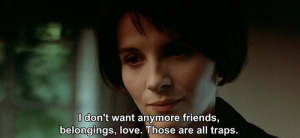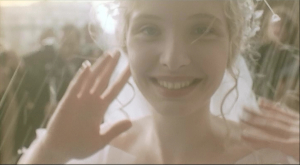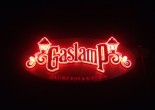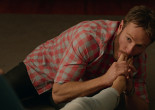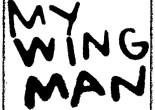Kieślowski at the MFAH
Krzysztof Kieślowski is one of the great directors of all time. Kieślowski – the name – doesn’t hold the same clout as say Fellini or Truffaut or Godard or Herzog or Bergman. But Kieślowski is the bomb and hands down one of the great international directors of the 20th century.
What a rare opportunity to see two Kieślowski films on the big screen. On Sunday, November 30, the Museum of Fine Arts is screening A Short Film About Killing (1987) at 3 pm., and Blind Chance at 4:45 pm. Kieślowski ranks as perhaps the greatest Polish film director, along with other Polish helmers like Andrzej Wajda and Krzysztof Zanussi.
The modern template of art films are filled with visual references to films that Kieślowski made. Blind Chance was actually remade as Sliding Doors (1998) with Gwyneth Paltrow and John Hannah. Kieślowski made a series of 10 one-hour films based on the Ten Commandments. A Short Film About Killing is an expanded version of one the episodes from that series known as The Decalouge.
The thought of even being able to see Kieślowski films in December, when every screen in town is pre-booked with holiday and awards-bait movies, is just icing on the cake.
Back in the 1990s, a quaint time when I was employed as the movie critic at Public News, I interviewed all three lead actresses from Kieślowski’s The Three Colors Trilogy (1993-94). Herein is contained those interviews in chronological order.
BLUE
When Juliette Binoche read for the part of Julie in Krzysztof Kieslowski’s Blue she gave him two photos.
“One was unfocused, the other was in focus. He loved the one that was out of focus. He knew that I understood the character,” she said by phone in focused English with a gentle Parisian accent.
“After this meeting I was reading a book and suddenly there was this paragraph that was very interesting that I wanted to send it to him. A story of how Visconti wanted to have Charlotte Rampling for one of his films. She was supposed to play a mother of three, ages three to seven. And she was 18 or 20. She called him up and said ‘I’m too young.’ He said, ‘I’m not interested in your age, I’m interested in what’s happening in your life.’
“Afterwards he said, ‘Fine you can do it.’”
“Why does she have to be 33? I’ll be there anyway,” Binoche adds with a laugh.
“The part has to be older so people will understand that she can build her life back again,” Kieslowski told her.
Part of a trilogy (along with White and Red) examining modern day Europe, Blue thrusts the audience into Julie’s life as she is widowed. “She accepts her pain which liberates her.
The image of her crying, she’s under the sheets crying alone.
“Sometimes I’d have to stress the importance of doing another take, sometimes it worked, sometimes it didn’t,” she recalled. “I just accepted it and did it the way he wanted it; I would say that one month I was fighting and the next month I wasn’t fighting anymore.”
Binoche who’s graced a total of 15 films to date concurred that Kieslowski presents weak male characters in Blue as in his previous The Double Life of Veronique.
“At first he [Olivier, played by Benoit Regent] appears to be weak but yet he’s the one who’s going to help her to accept things and start her life again,” Binoche explained, “Weakness is sometimes stronger than we think.”
WHITE
“To me the richest culture is when it’s a mix of everything. When you look at France it’s been invaded by Arabs, by Germans, or English. By everybody,” comments Julie Delpy speaking by phone from a hotel in New York. Promoting the Miramax release White, Delpy said working on the middle installment of Krzysztof Kieslowski’s Colors Trilogy challenged both her perceptions of acting and present day Europe.
White, as comical and whimsical as Blue was cold and experimental, follows the break-up between Karol, a Polish hairdresser and his French wife Dominique. The last piece of the trilogy and Kieslowski’s last film since he announced his retirement as a director at Cannes this year, Red will open in the U.S. at year’s end and promises to briefly reunite all the lead characters from the previous Colors films.
Delpy describes Kieslowski as a director who cares about his actors.
“The first take is the best, the most spontaneous and the most natural,” she said. “When he gets what he wants he doesn’t try to get something else. That’s it. I remember we were shooting the love scene. It was extremely exhausting because he wanted something really precise in the timing of the screaming.”
This is a scene where Dominique (Delpy) is finally having sex with Karol (Zbigniew Zamachowski). The reason they were divorced at the beginning of White is because he couldn’t consummate the wedding.
“I had to breathe for ten seconds then begin to scream slowly for ten seconds. And then after 20 seconds I had to scream really loud, and then after 30 seconds I had to scream like a maniac,” said Delpy describing her character’s inner dialogue. “So it was timing, you know, and I could see him keeping me advised, next to the camera. It was about timing more than about acting. We spent a long time doing it, three or four hours.”
In the end Kieslowski was not happy with what he had asked Delpy to do. “He wanted something, and at the same time when you ask for something you get something else. In the end we re-shot it,” Delpy said, chuckling, “we re-shot it in five minutes.”
Reserved and preferring to spend time alone reading scripts or books, Delpy sees herself as “very serious, very faithful and whatever.” Still she pragmatically called nightlife a “macho world. Women, 40-years ago and today, cannot go alone at night in a bar alone without being annoyed by 20 guys. The media says there’s a lot of change. I don’t believe it. I’m not a feminist. I think society is wrong, not men. If a director sees a pretty girl he would be stupid not to fuck her if she’s ready to do it. It’s her fault. She’s using herself to get work.”
Delpy was recently seen in The Three Musketeers as well as parts in Europa, Europa and Bertrand Tavernier’s La Passion Beatrice. While one scene in White was shot on a 17-degree overcast day it was nothing compared to shooting in a castle on location in the Pyrenees Mountains for Beatrice.
“It was so cold I couldn’t move my finger. I had to run around naked. I don’t even remember shooting the scene.” Delpy figuratively added, “I was almost unconscious, it was so cold my brain was frozen.” Delpy leaves for Vienna shortly to star in Richard Linklater’s newest film, Before Sunrise.
RED
“We did a film before,” Irène Jacob said referring to The Double Life of Véronique,” to a round table of reporters at New York City’s Rhiga Royal hotel. In Véronique her turn in dual roles won her the best actress prize at Cannes in 1991, thus putting her in a pivotal position with Juliette Binoche and Julie Delpy as the trio of heroines ripe for director Krzysztof Kieslowski’s Three Colors trilogy.
Jacob read the first treatment of the three films Blue, White and Red while working with the enigmatic Polish director. Kieslowski told Jacob that the films would express a European feeling by shooting in three different countries to represent each color. “They were trying to find a country which would be a French language country, but not France,” said Jacob.
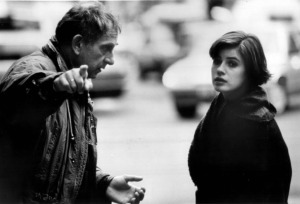
In a sense, Jacob speaks for Kieslowski since the 53-year old helmer remains reclusive following his announced retirement from filmmaking after Red. In an interview in the NY Times Kieslowski spoke of retirement from film as the ability to “Just sit in a room and smoke.” He stated about Red’s location, the Swiss town of Geneva: “One of the richest countries, and yet it’s filled with so many unhappy people. It’s probably the only country in the world where it’s considered a virtue to turn your neighbor in for not paying their taxes.”
Jacob lilts in her broken English: “Kieslowski speaks of the kind of expectation and hope you feel as a child. It’s true, people give trust, and sometimes, no, they give us something really bad too.
“If someone is good it’s always a surprise and really nice. It’s a chance we have met this person before,” Jacob said. “We aren’t meant to be alone, and we hope, always, to find a good match in whatever we do. In friendship or love.” Referring to Red, Jacob added: “Something great are the non-encounters between characters. They pass without ever meeting. They might be really great for each other but they never meet. This idea reminds me of the two characters in The Double Life of Véronique, where the two identical Véroniques are face to face but they don’t see each other.”
Kieslowski’s films are reminiscent of art films, particularly Ingmar Bergman. Audiences have varied reactions and interpretations to the events taking place on screen. Ambiguity plays a role in the varied plots of Kieslowski’s trilogy. Though the stories have interlocking events one need not see them in order, or in tandem for the ideas to make sense. They stand on their own. Also like Bergman, Kieslowski changes style from film to film and he provides existential if not fantastical roles for actresses. Whereas Blue unrolls as solemn, courting death and depression, White comes across like a dirty sly joke with sex treated as a comic weapon.
“What is a common thing between the three is the director, the way he looks at people,” Jacob said. “I think the story leaves the concept to return to something which is more about feelings.” Jacob’s English is as conceptual as Kieslowski’s images, but the meaning is clear. Half in jest she mutters, “I don’t know, I need to look at a dictionary.”
Many of the scenes in Red were long takes and the coverage took up to a week to film. Sometimes Jacob found Kieslowski’s method of discovery very roundabout. “If I would say something, he was interested in the reaction of Jean-Louis; if Jean-Louis said something he would be interested in how I would react to it. It was like we were building something in the middle we couldn’t see. In Véronique it was the introspection of a woman. The camera was entering inside someone. Here, in Red, the camera is in the middle of two people,” Jacob said.
“Valentine doesn’t feel compassion at all, she would like to help but she can’t face the limits,” Jacob said about her character, a young model whose wall-sized ad mage adorns a busy street corner. When she hits a dog with her car she seeks out its owner. What Valentine finds is a cranky, retired judge who uses the latest electronic gimmickry to listen in to his neighbor’s cell phone calls. Valentine’s neighbor, a law student, mirrors hers in the way they face moral dilemmas. Though they live across the street from each other they never meet.
“It’s a mystery when you provoke things. You never know who responds to your provocation,” Jacob mused. “We are not here to be alone. Even if we have no friends. We feel a kind of closeness to someone else, and this is a gift we have.”
— Michael Bergeron


